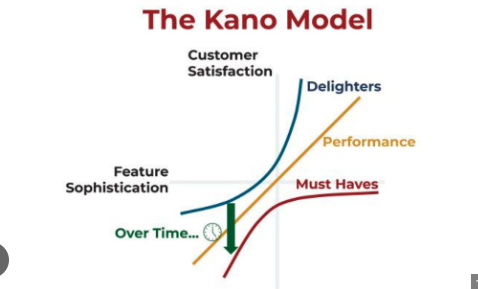May 22, 2024
Applying the Jobs To Be Done Framework to Your School’s Business Model
Background
This article builds on the earlier article about the business model canvas and assumes you have read that piece and are looking to take action.
You have been working on filling in and sharing your business model canvas with key stakeholders like your Board and Admin Team. The conversations you have had reveal various needs, threats and opportunities in your operating environment or marketplace. With tuition coming in, you know you have some degree of product-market fit and will want to make improvements to that fit so you can improve your business model’s outcomes — finding more viability, desirability and feasibility in delivering your mission. How can a school leader begin those improvements?
Beyond using the business model canvas to build unity of purpose and community of trust among your stakeholders, how can you refine your strategy and move into action — initiating and guiding the tactical deployment of your strategy across the school?
Current condition
Whatever your school is currently offering to the market, your value proposition is designed for a particular set of families and their specific expectations and needs: you have a set of features and programs that make your school your school. Maybe it’s a particular program or pedagogy or curriculum. But how well do you know your market’s needs and how they think about their needs? Why are your tuition payers buying your school instead of another option?
To begin taking action and getting a deeper understanding of your buyers there are two overlays to your business model that can help evolve your programs deliberately and strategically: Jobs To Be Done and the Kano model.
JTBD
Jobs To Be Done is a framework used to understand why your customers pay tuition, why your donors give to your school and what their goals and needs are. These are related to the customer segments in the business model canvas. Research by NAIS has revealed four basic ‘jobs’ that parents have when they ‘hire’ an independent school — the features that they seek in return for tuition.
- Emergency situation — the family is in some degree of crisis and needs to find something that works better than their current placement.
- Aligned community — the family seeks a specific sort of community, perhaps with religious affiliation or single sex or other group affinity.
- A citizen of the world — the family wants their child to be well rounded and socially integrated above all.
- A future “master of the universe” — for parents looking to push their children to the highest levels of performance or prestige.
These jobs can overlap at times and your school will probably have a mix of these jobs within your current families. As a school leader you and your marketing and admissions teams need to know your current ‘job’ mix, assess if the mix is aligned with your mission and program, and then create deliberate movement in the direction of improved outcomes for the school. That will look like targeting one of the four jobs and improving how you communicate your value proposition to the demographic that is hiring a school for that job. But how to focus your efforts and limited resources? Enter the Kano Model.
Kano Model
Once you have a sense of which of the four jobs you need to deliver better on, you can then begin to develop some testable hypotheses for experimentation in marketing or professional development or the like. But before starting to run experiments you need to focus on better understanding what will delight your demographic target. Just such an understanding was the impetus for the development of the Kano model.
Conceived in Japan during the 1980s to help organizational leaders and marketers improve product-market fit, the model gives leaders a visual way to attack a market learning challenge. The model distinguishes between three types of features:
- ‘Table stakes’ are features that must be present for a parent to consider becoming a tuition payer. This might include accreditation or reputation or a type of sports program. Tuition payers may not love your school because it is accredited, but they need to see it anyhow.
- Performance features are ones where more of those features make the buyer happier.
For example, the percentage of faculty with advanced degrees might be what your buyer wants to see or perhaps the number of AP classes or elite college placements. These are not deal breakers, but are markers of quality or other attributes that matter to your buyers for that type of job. - The third category are delighters, the experiences kids have or the features that will turn your customers into superfans, the sort of parents who will love to tell their friends about how much your school has mattered for them. Maybe your school helps students who had been turned off to school rekindle their love of learning. Perhaps your students do projects in the community that make a splash and create powerful connections. Or maybe your after-school programs are perfect for your family’s needs. Different jobs will have different delighters. Your work is to do that discovery and then run tests on your delighters to validate them, after which you can scale those programs or features.
The basic steps to follow to improve the ‘fitness’ of your school’s offering in your area as follows:
- Understand the composition of your tuition payers by JTBD.
- Target one of the four Jobs to pursue as a segment of your community.
- Understand the table stakes, performance features and delighters for that segment as much as you can.
- Run marketing or programming tests to validate or invalidate your best guess about what will make you more irresistible to your target audience.
- Assess your progress by using a small number of metrics and iterate as quickly as you can to get to a validated improvement to allow you to capture more of that market segment.
While this isn’t easy work, the advantages of doing it are many. When you get it right your target market will feel seen and know you have their needs in mind. With the program to deliver on the job, those students will have better experiences, making word of mouth marketing easier. You will know your market better. Your staff will know how to better meet the needs of your target market. In the end this customer discovery needs to be ongoing because your market and your competition are dynamic and evolving. Finding small ways to build in this market discovery and development is a key part of any successful strategic plan in schools pursuing long term financial viability.
You may also be interested in reading more articles written by Simon Holzapfel for Intrepid Ed News.


